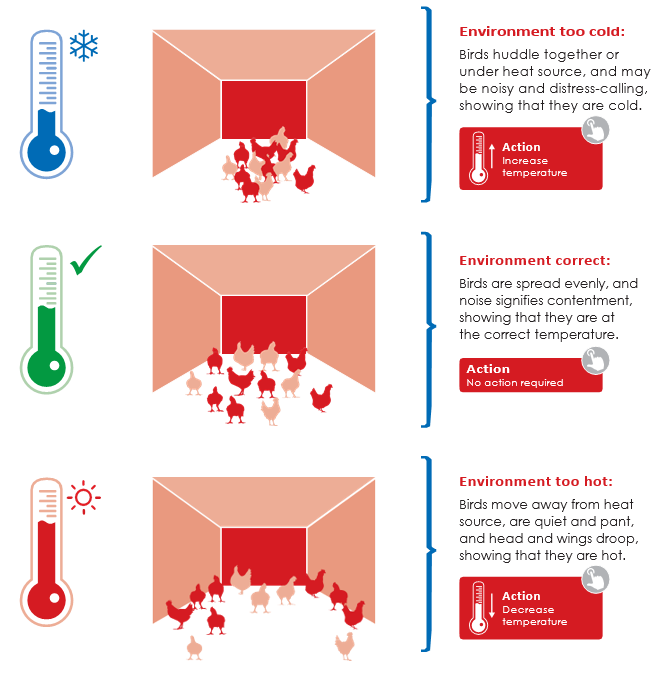



Essential ventilation management, part 1: bird behaviour, temperature and humidity
This series has been written with the guidelines for a house in a climate that may experience four seasons. As such the series will cover the three modes of ventilation (minimum, transitional, tunnel). In most countries and climates around the world, these three modes of ventilation are necessary in order to have the best chance of maintaining bird comfort.Part of Series:
Next Article in Series >
Summary
The ventilation system in a poultry house is a management tool that is used to try keep the birds as comfortable as is possible, regardless of the ambient conditions. Because of this, the system (house, equipment, and controller) should be designed to be able to cope with the local ambient conditions, day and night, any time of the year.
What is ventilation?
Adequate ventilation ensures bird comfort, optimal biological performance, bird health and welfare. The ventilation requirements of the bird changes as it grows and with climatic conditions; ranging from providing a minimum amount of fresh air (regardless of outside temperature) in cold weather, to creating high air speed to keep birds comfortable during hot and/or humid conditions.

During periods of cold weather, the aim of ventilation is to provide enough air exchange to remove excess moisture and maintain air quality, while at the same time keeping house temperature at the desired level (otherwise known as the set-point, or the temperature that keeps birds within their comfort zone).
During periods of hot and/or humid weather, the objective of ventilation is to remove excess heat and provide cooling through wind-chill effect created by air movement, and evaporative cooling.
How is the bird’s climate controlled?

Relationship between temperature and humidity
The temperature actually felt by the bird (effective temperature) is influenced by relative humidity (RH).
- For a given temperature:
- at low RH, dry bulb temperature may need to be increased.
- at high RH, dry bulb temperature may need to be reduced to maintain bird comfort.
- the birds will feel cooler if the RH is low.
- the birds will feel warmer if the RH is high.
A low RH will decrease effective temperature. A high ambient RH reduces the ability of the bird to lose heat via evaporative loss (panting) and effective temperature will be increased. Dry bulb temperature must therefore be altered to account for RH:
Note: Adjustments in temperature should be made in accordance with bird behavior
Bird behavior
House ventilation is based on air quality, and bird comfort. Given this, bird behavior is the only real way of determining if ventilation is correct. Climate control systems must never be used as the sole indicator of the suitability of house environment.
If bird behavior indicates that changes to ventilation are required, those changes should be made to ensure birds are kept as comfortable as possible and not exposed to environmental extremes.

House operating pressure
For air to flow into and out of a house there must be a difference in pressure between the inside and outside of the house. Most ventilated poultry houses work on negative pressure.
What is “negative pressure”?
When the fans are switched off, the pressure inside the house will be the same as that outside the house. This means that if the doors or side inlets are opened, the air will not flow into or out of the house (assuming the wind is not blowing).
In a well-sealed, air tight house, when an extraction fan is switched on, air will start to leave the house through the fan and the pressure inside the house will be different to that outside the house. The outside pressure will remain the same as before, but the pressure inside the house will reduce; becoming less than the outside pressure. In ventilation terms, this is referred to as a ‘negative pressure’. In actual fact, the pressure inside the house is not negative; it is still positive, but less positive than the pressure outside.
When there is a negative pressure in the house, air will enter evenly through all the inlets, regardless of where the fans are situated. The greater the negative pressure (the difference in pressure between outside and inside the house), the faster the speed of air coming in through the inlet.











